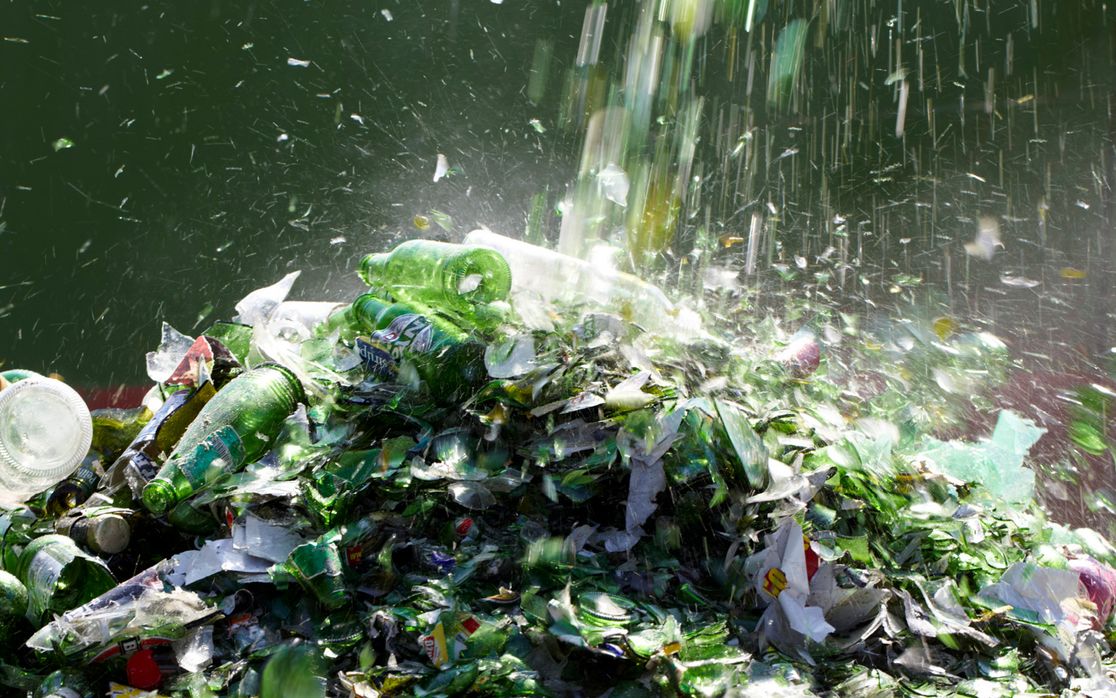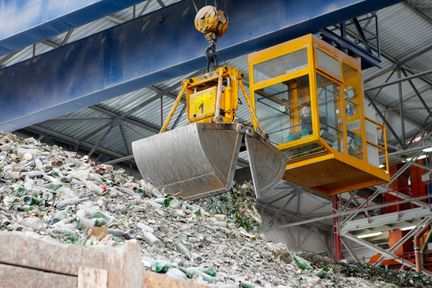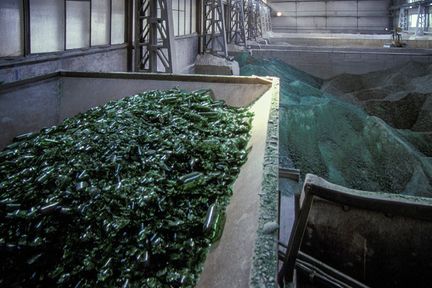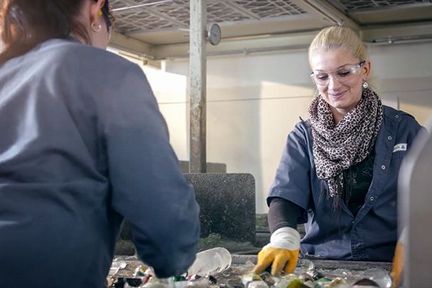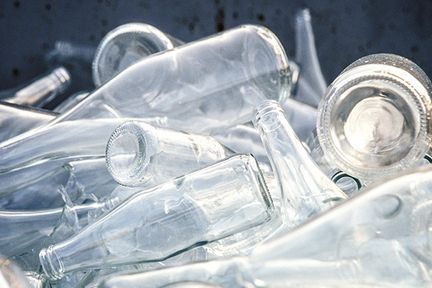We are pioneers. Not on the Yukon River, but when it comes to containers. Ever since the 1970s, we have been taking advantage of one of the useful properties of glass, in the interests of the environment and our customers. Glass is a natural substance and 100% recyclable without suffering any loss of quality. Recycling must therefore be the right decision, both ecologically and economically.
The goal of a future-proof materials cycle is for all the raw materials to be brought back into the production process after the individual product has reached the end of its life-cycle. We have been pursuing this goal since the 1970s. That was when we became the first company in Switzerland to set up a recycling system for used glass.
Today, we use used glass consistently at all our sites. In the Vetropack Group, recycled glass has now become the main raw material in our glass production, almost 60% on average across all our national companies.
Together with our partners, we are improving the collection and reprocessing systems because it is important to us that glass of different colours should be collected separately. This is because, to make clear (flint) glass, you can only use clear cullet (broken glass).
The advantages
Recycling saves resources
Glass goes round in a materials cycle that is 100% closed. It can be endlessly reshaped into new bottles and jars, with no loss of quality. In 2009, glass recycling in Europe alone saved 14.4 million tonnes of primary raw materials.
Recycling improves the environmental balance
Reusing old glass has hugely improved the environmental balance of glass production in just a few decades: in the last 25 years, thanks to recycling and technological innovations, the European glass packaging industry has reduced its CO2 emissions and waste production by 70%. There is simply less waste generated as a result of full recycling. 74% of all glass bottles find their way into recycling containers in Europe every year – that is about 30 billion bottles that are turned back into high-quality glass packaging.
Recycling saves energy
Melting down used glass uses less energy than melting down the primary raw materials. The higher the proportion of used glass, the greater the energy savings: for every 10% of recycled glass that is used, 3% of the energy and 7% of the CO2 emissions are saved.
Recycling makes glass attractive
Both customers and consumers have similar concerns: environmental considerations, health and the sustainable procurement of raw materials are important factors when they are making buying decisions. Glass is a healthy, high-quality packaging material with a permanently sustainable life-cycle: glass is reused, over and over again.
Simply enjoy – and then?
Bottling plants and retailers
Next it’s the turn of the bottling plants, the buyers of the glass packaging. Vetropack is familiar with their requirements and advises them on issues relating to filling technology. On request, designers work together with the customer to develop bespoke glass packaging. Retailers bring the products to the market in disposable or reusable containers.
Packaging and dispatch
Packaging glass is delivered to the bottling plants stacked and shrinkwrapped on standardised pallets. Packaging of the storage and transport units takes place to a large extent automatically. Vetropack has a proven track record in logistics, with large storage areas and warehouses at its disposal.
Quality testing
In the cooling tunnel the red-hot bottles are cooled under controlled conditions. This is an important process, because cooling them too quickly could lead to material stress. Subsequently, each glass container is optically and mechanically checked. Random samples are subject to further testing in the lab.
Melting and forming
In the furnace, the raw materials and used glass are melted down to liquefied glass at a temperature of around 1,600 degrees Celsius. Red-hot drops are cut from the viscous molten glass and in a first step are pre-formed and in a second step blown into finished glass containers.
Used glass and raw materials supply
It all starts with Mother Nature, because the main raw materials in glassmaking – quartz sand, lime, sodium carbonate, dolomite and feldspar – are naturally available in almost unlimited supply. Furthermore, via bottle banks and recycling plants used glass containers find their way back to the glassworks where they are recycled and used in the production of new packaging glass.
Returns and recycling
Depending on the kind of container – disposable or reusable – the used glass is returned to the retailer or collected in bottle banks for recycling. From the recycling plants, it comes full circle back to the glassworks, where it is used in the production of new packaging glass.
Vetropack creates economic, environmental and social added value.
